Beauty is in the simple things
San Miguel de Allende day 4
Our first destination this morning was Parque Benito Juárez, a ten minute walk from our hotel.
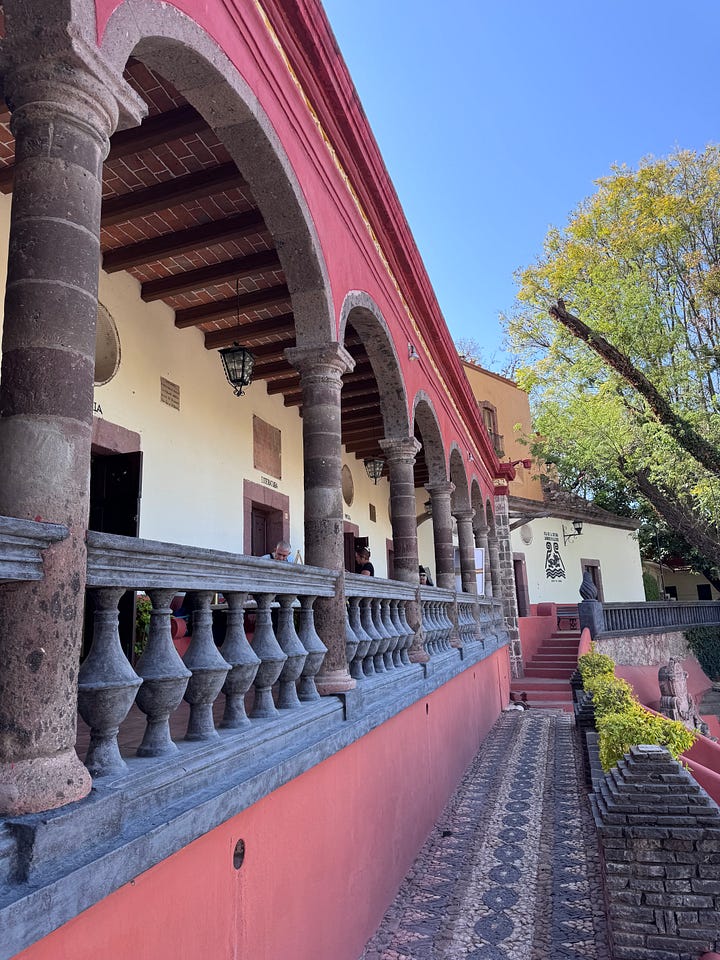

On the way we passed Casa de la Cultura, which houses an art school, a lovely old building overlooking Parque El Chorro, home to egrets, many of whom were already nesting in the trees.
This was the location of the first settlement here, where the El Chorro spring comes from the mountain.
Public wash basins line a small square where people came to wash their clothes.
The street winds down the hill to the 100 acre Benito Juarez Park, divided by the ravine of the El Chorro stream.
A vendor had some interesting old photo prints from the Mexican Revolution and of the town itself for sale. I couldn’t resist buying a few and will share them with you in a future post once I have researched the subjects a bit more.
We wandered down the leafy paths, enjoying the butterfly garden and peaceful setting.
I chased this butterfly for a bit trying to get its picture as it flew amidst the blooming lantana. ID pending on iNaturalist. (BTW the hummingbird pictured a few days ago is a Broadbilled Hummingbird.)
Leaving the park our route led back towards the main square, with the Parroquia showing the way.
I again inspected the old church, looking for a famous oil painting of the town, but it’s no longer on display. I did notice, for the first time, a little pig next to this guy! I wondered why a pig in church?
San Antonio Abad is the patron saint of animals. He is also the patron saint of gravediggers, amputees, and epileptics. He has a big festival for the Blessing of the Animals. I’m sure many of you already knew this, especially if you have a pet.
The old church was the original, as Brilliant Reader Sue Cauhape guessed in her comment yesterday. (Sue writes Ring Around the Basin here on Substack, a great blog that I recommend! Check it out!)
The old church was built on an east-west axis in 1564, while the new one is on a north south axis. It would be more than 50 years after this church was built here in the mountains of Mexico before the Pilgrims would first land on this same continent.
I’ve been pondering the development of Mexico versus the rest of the continent and will write about it more. But one of the things that surely motivated the earlier development in Mexico must have been Spanish thirst for silver.
After a lovely lunch we returned through the town square, where the egg and flower vendors were lined up, but no customers. Then suddenly, a rush of children cascaded down the street. School had let out and the kids couldn’t wait to buy their eggs!

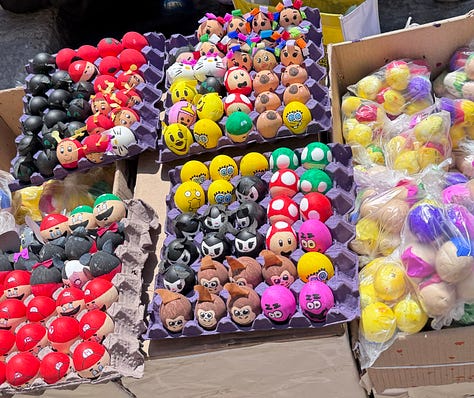
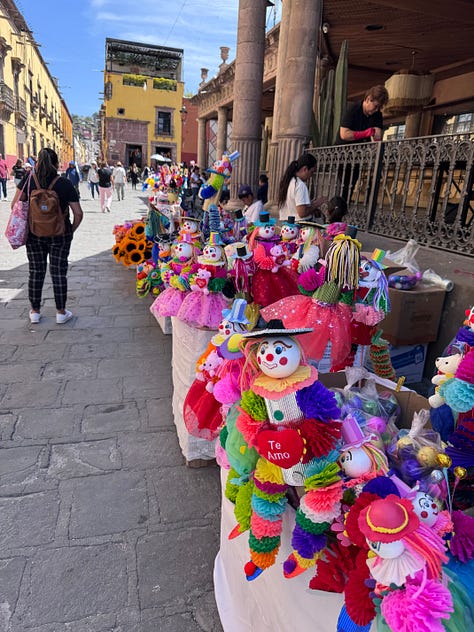
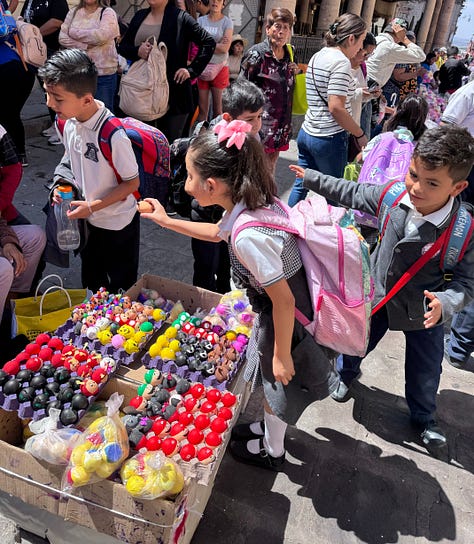
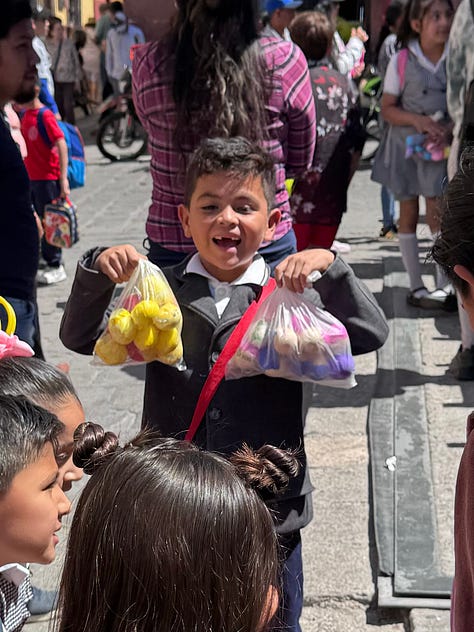

There are still two days left before Lent so still time to have fun! Such energy! Such joy!
We headed down a narrow street towards our hotel, then suddenly an art gallery caught my attention. I recognized the name, Fuentevilla. It was the same name as the artist of the opening picture I used in yesterday’s post!
Meet Roberto Fuentevilla! It was his studio! What a nice person! He welcomed us and kindly posed for this picture.
You can visit his online store here: Fuentevilla Gallery Everyone has their own tastes, of course, but I really like this guy’s work. Of all the works we saw in the Aurora Fabrique Gallery, the opening picture in Yesterday’s Post had been my favorite.
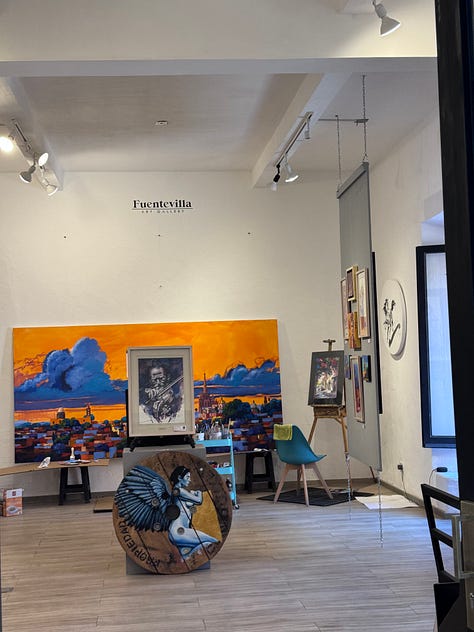
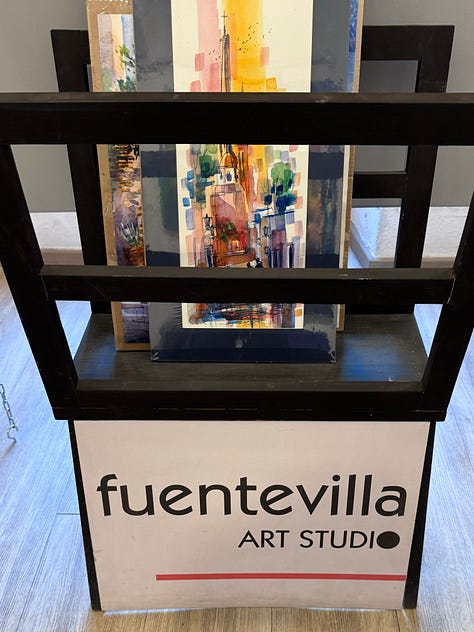
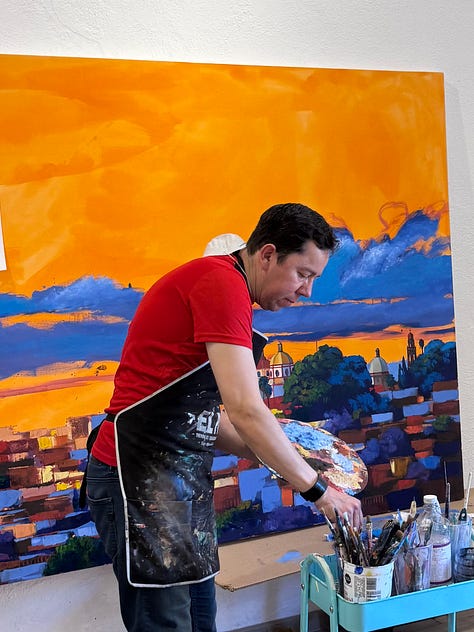
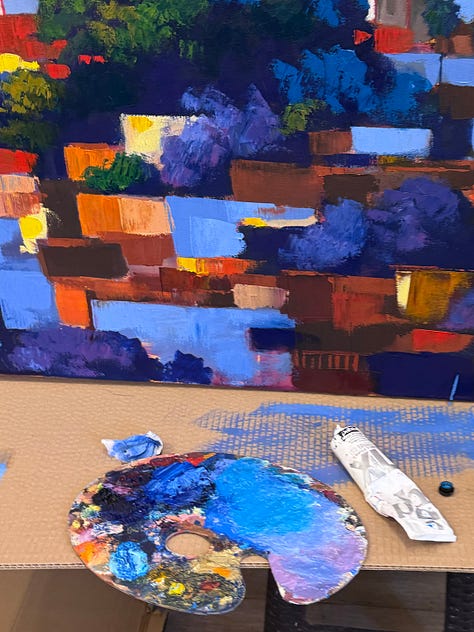

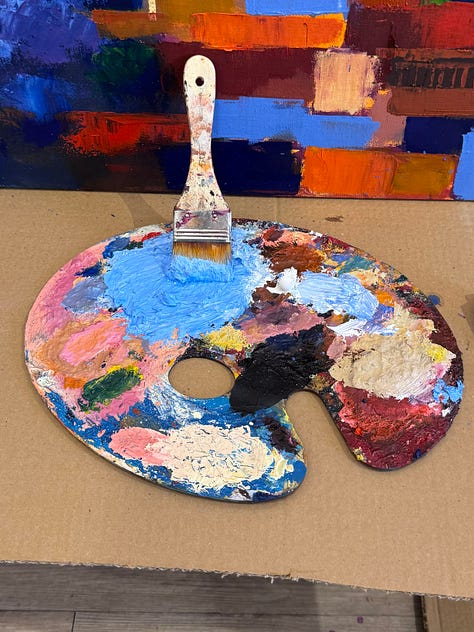
Born in Mexico City, Roberto studied drawing and painting in Florence, Italy as well as participating in several painting workshops. His painting 'Tacuilco" won the National Prize for Watercolor. He says:
I paint what excites me. My challenge is to find and extract the beauty of simple things, that is where the essence of my work lies.
This is what we all seek, isn’t it, whether writing, painting, or making music? To capture the spirit, the essence, of life?
I realized that this is what I have been trying to do here in SMA, to capture its spirit, energy and essence and share it with you, through words and pictures.
We have one more day left here before we return to ZLO, then in a week we’ll be back in Michigan. Wow! Where did the Winter go? These beautiful gardens have me ready for Spring!
Thanks so much for traveling along, and for the great comments, shares, and likes~!
Post #1 in SMA Series: Welcome to San Miguel de Allende
Post #2 in SMA Series: Parroquia de San Miguel Arcángel
Post #3 in SMA Series: Carnival, Markets and Art Galleries
Post #4 in SMA Series: Beauty is in the Simple Things
Post #5 in SMA Series: What can the History of Mexico tell us?
Post #6 in SMA Series: If you go: Hotels, Restaurants and connections.





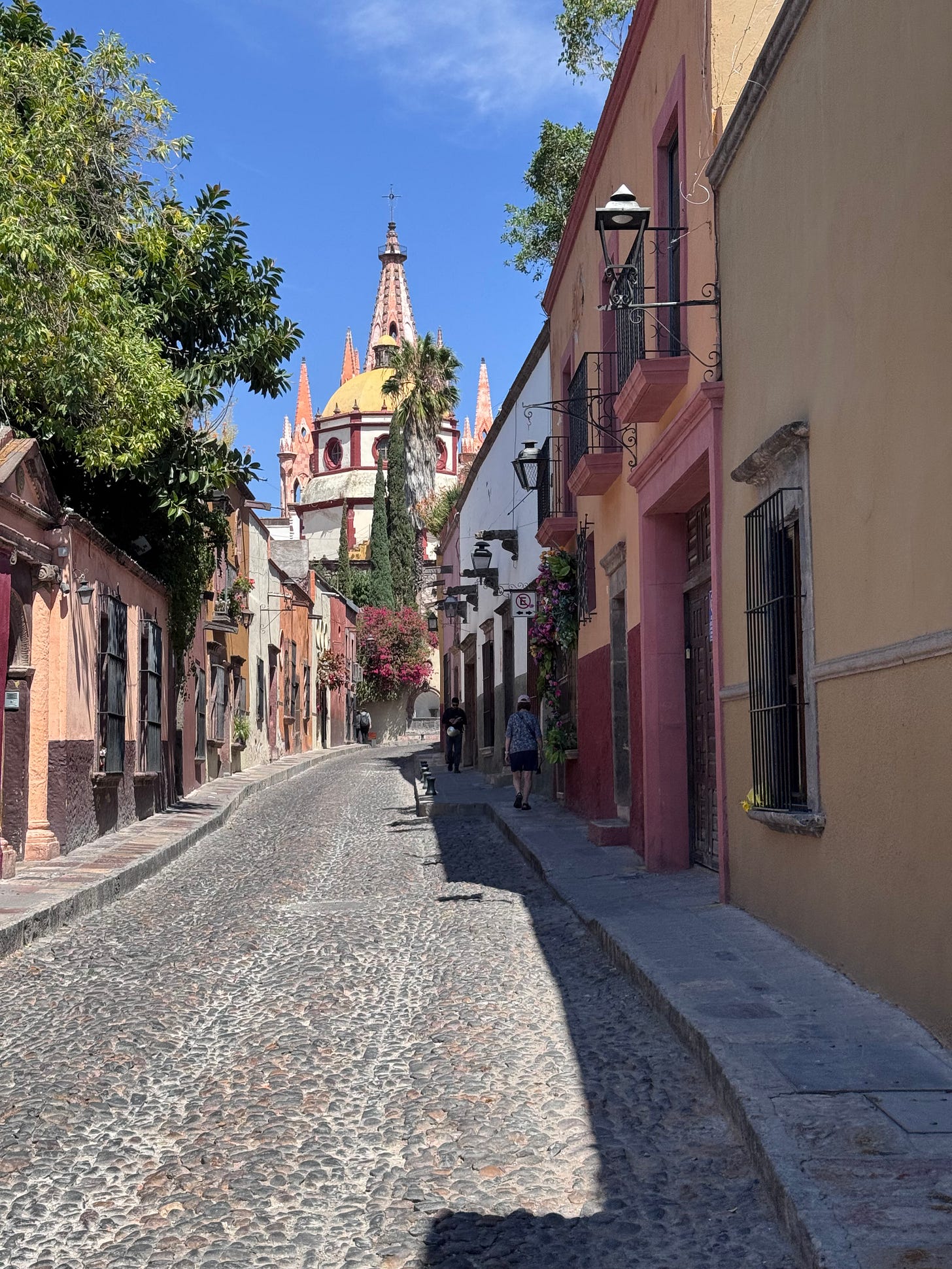
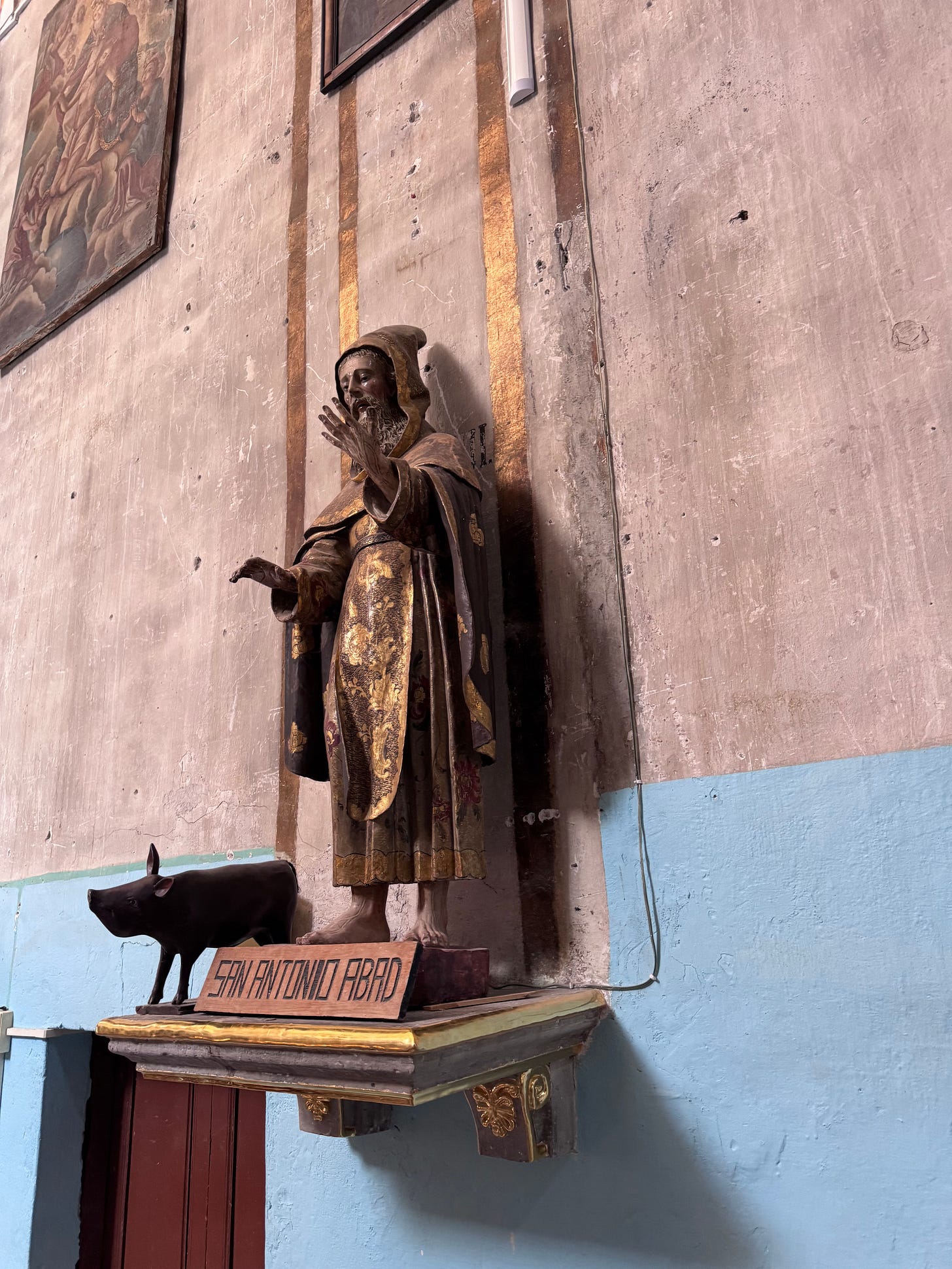
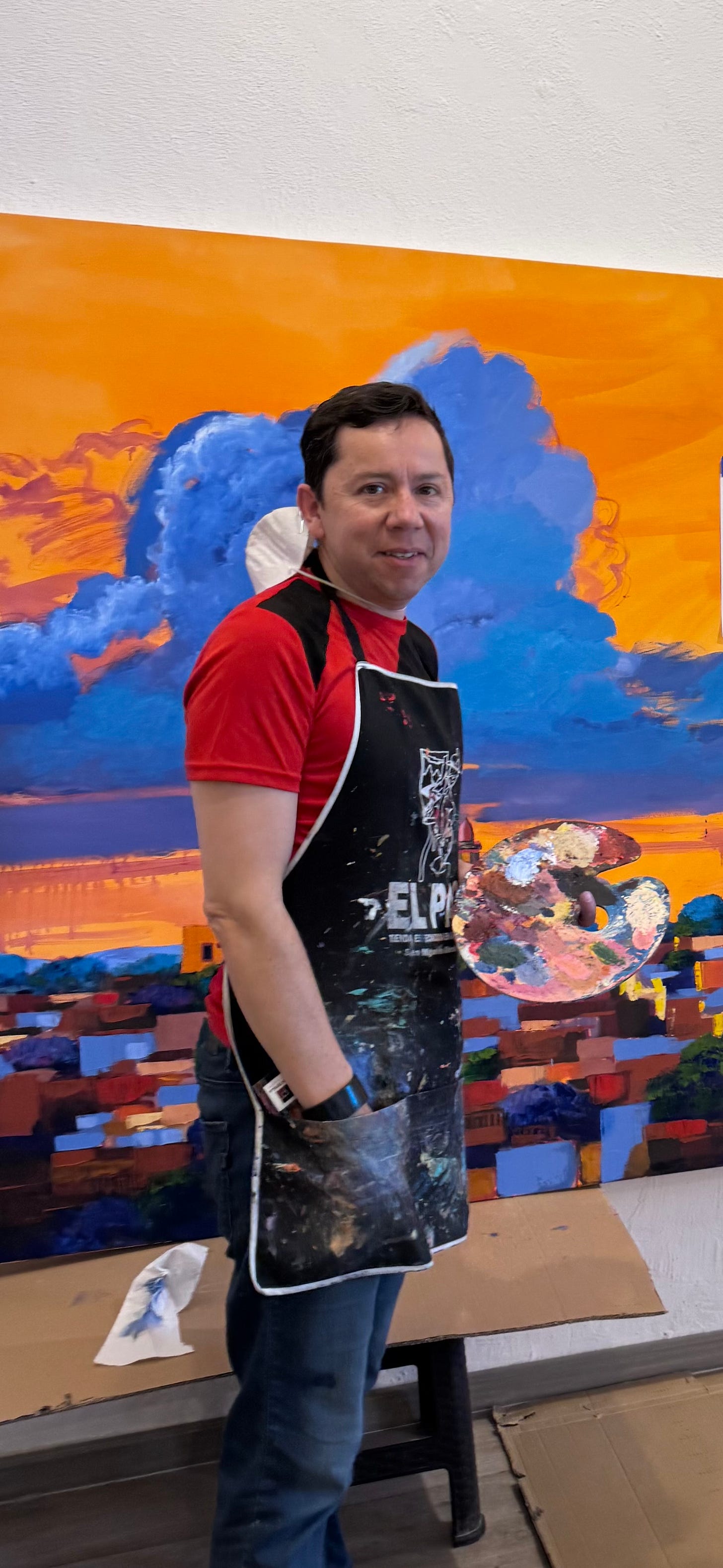
The people of that place love colour by the look of it. Thank you for showing us the soul of the places you take us to.
😁 Thank you so much for the plug, David. That was so kind of you and such a pleasant surprise.
These photos were beautiful. Looking back at Fuentevilla's painting you shared yesterday, I remembered how it struck me. The colors and the energy through the pointelist (sp?) method he used. You know, David, if the Mexicans ever gave up their brilliant colors for Lent, they wouldn't survive. It is their lifeblood.